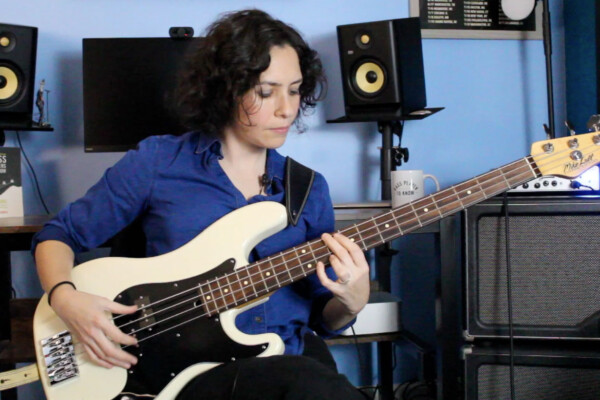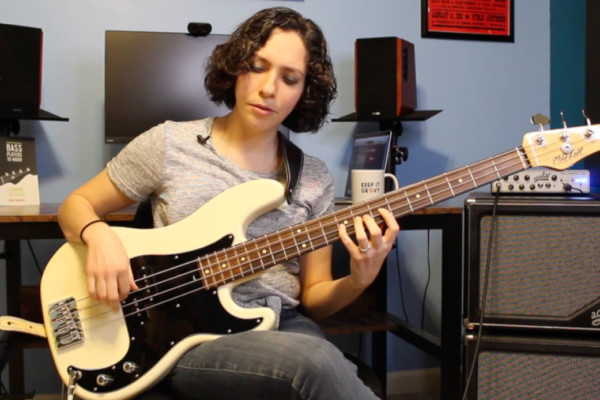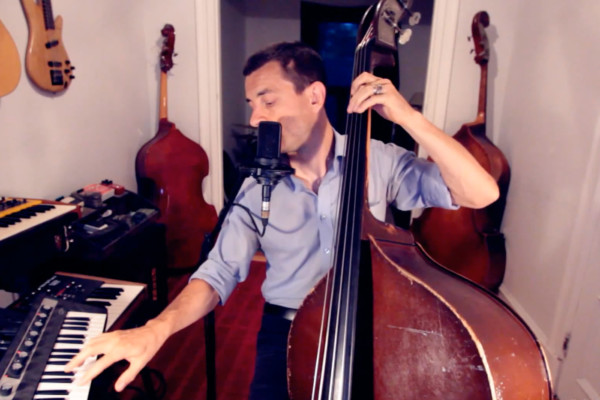Chord Construction: A Guide for Bassists
Q: I’ve been playing bass for about four years, and I’ve had difficulty with understanding chord construction on the bass. I know my scales and their modes inside and out, and I know a lot about the fretboard. My technique is good too, but I figured when I was starting out that I really didn’t need to know chords “because I’m a bass player.” Now I’m paying for it. Could you explain chord construction to a confused bass player?
A: In a way, this is really pretty simple. When you are playing bass, you are likely playing mostly the roots of the chords (if the guitarist is playing a D7, then you are likely playing a D… Supporting the lower end of the harmony).
Here is a quick reference for how chords are constructed:
Chords are built in 3rds from the major scale. So a Major chord is built by stacking the notes of the major scale in 3rds (C Major = C E G B D F A).
Since we run out of notes if we only stack within one octave, we use a two octave scale. This is why you will see numbers associated with some chords over 7 (there are 7 notes in the scale).
If you see a 9, for example, you can ascertain the scale degree by subtracting 7.
9-7=2, so if you see a CMajor9 chord, it is telling you that the chordal instrument will be sticking the 2nd degree of the scale, somewhere in the upper register in their voicing (a “voicing” is just the word used to describe how they will play the chord. Different orders of notes have different sounds and ‘moods’ to them).
The part that you should pay close attention to is the initial chord quality.
Here is a guide (using the Major scale as the reference):
I will only focus on chord tones (root, 3rd, 5th and 7th. All non-chord tones – or 9, 11 & 13 – are considered ‘tensions’ or ‘extensions’ and are not always played. Instead, they’re used to help give the chord a certain sound.
MAJOR
- 1 3 5 7 of the Major scale
- Denoted by either the letters “MAJ” or the symbol “?”
Dominant
- 1 3 5 b7 of the Major scale (there is no chord symbol for a Dominant chord. It will be reflected by the Root of the chord, followed by a lone “7”)
- C7 = C Dominant = C E G Bb
minor
- 1 b3 5 b7
- Denoted by a “-” symbol or just “min”
Half-Diminished
- 1 b3 b5 b7
- Denoted by either symbol “-7(b5)” or “ø”
Fully Diminished
- 1 b3 b5 bb7 (bb7 is the same note as a natural 6 of the scale)
- Denoted by a circle with NO line through it “o”
Some chords will have a “7” in them, and some won’t. The appropriate 7th will always work, technically, but the composer is generally telling you that they want a simpler sounding chord if they leave out the 7th. A CMaj7 sounds denser and more complex than a simple CMaj, for example.
Understanding chord construction is key to developing fully functional and interesting bass lines. It is most certainly a must for an improvising musician. If you plan on soloing over changes (or even with one chord), knowing and understanding this stuff is paramount.
For some ideas of different ways to practice over chord changes, check out some of my other articles and videos.
Here’s one to get you going: Playing Through Changes with Arpeggios: Exercises for Bassists.
Readers, how have you gone about learning chord construction? Tell us about it in the comments.
Have a question for Damian Erskine? Send it to [email protected]. Check out Damian’s instructional books, Right Hand Drive and The Improviser’s Path.




When playing chords on the Bass the 5th is sometime omitted, if the key center is on the bottem. So for example, if you played a “C Maj 7” you play the 1st, the 3rd and the 7th. for some reason the ear think’s it hears the 5th. Try it . now if your play it inverted you can get all four notes in.
Very concise! Thanks Damien.